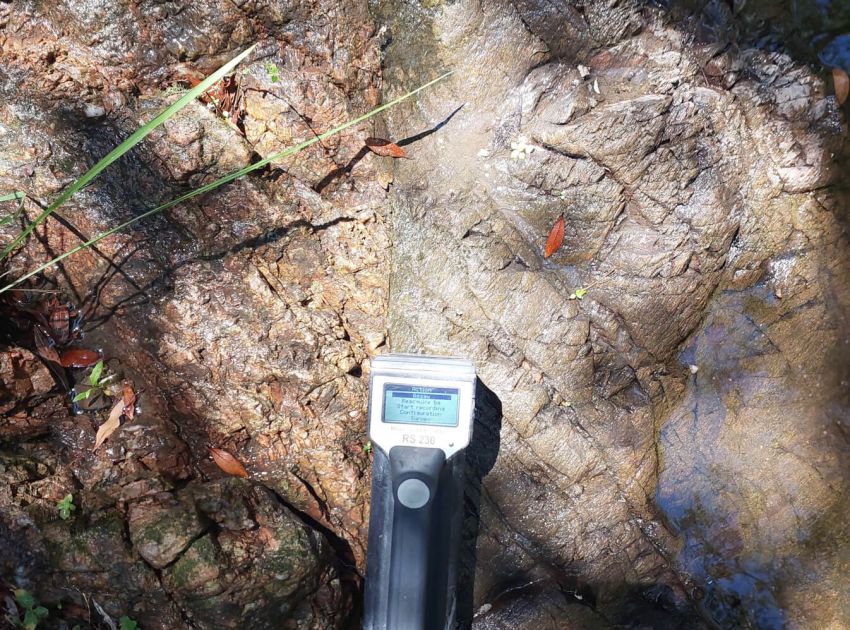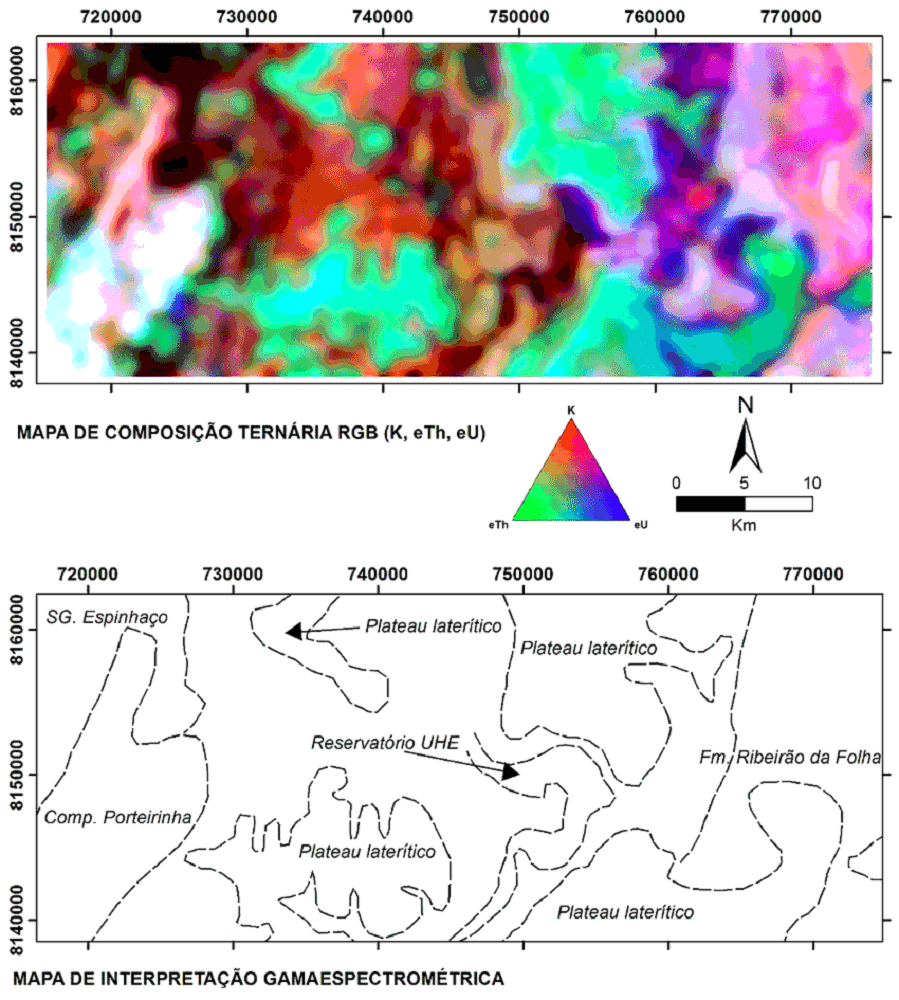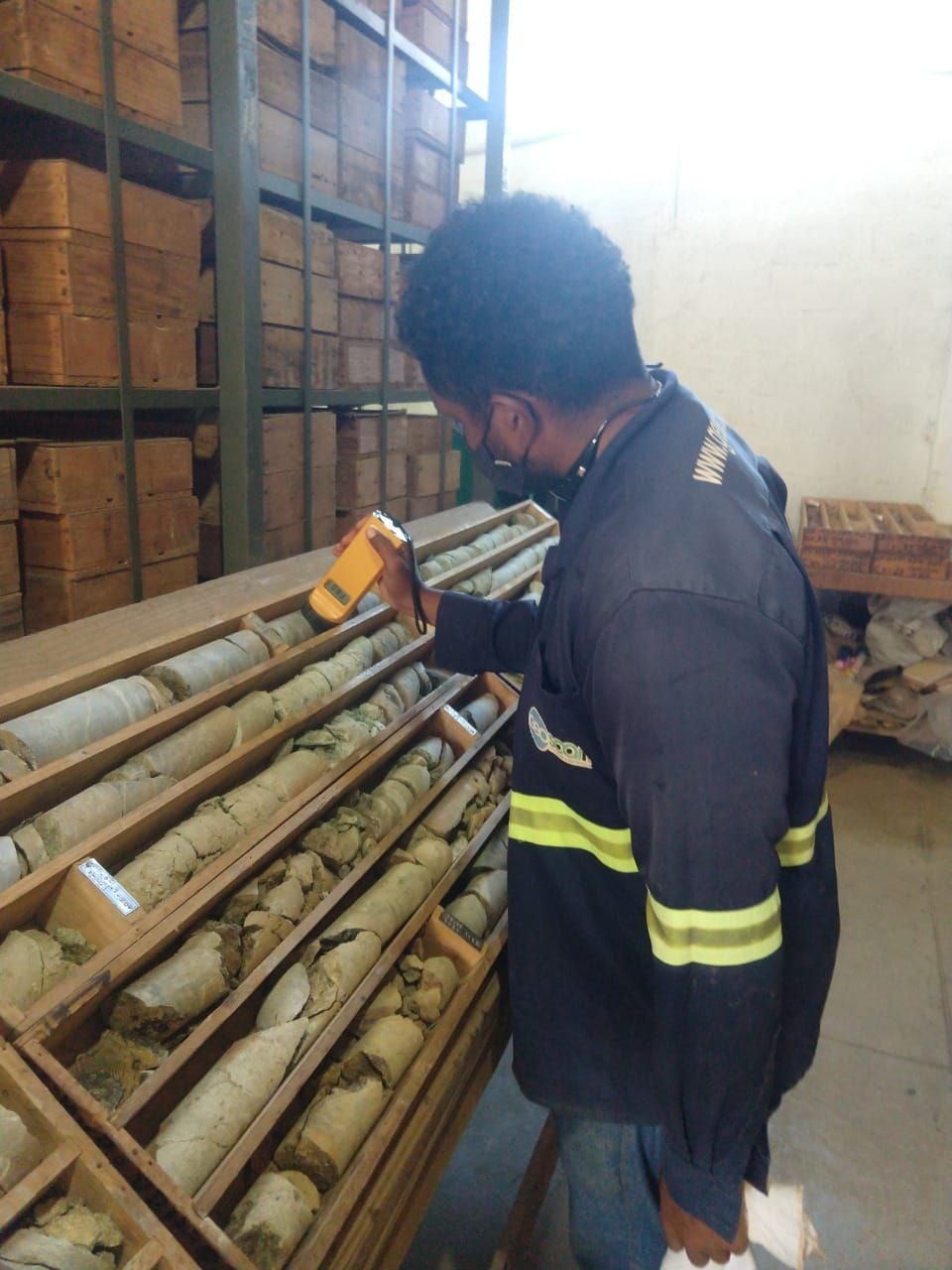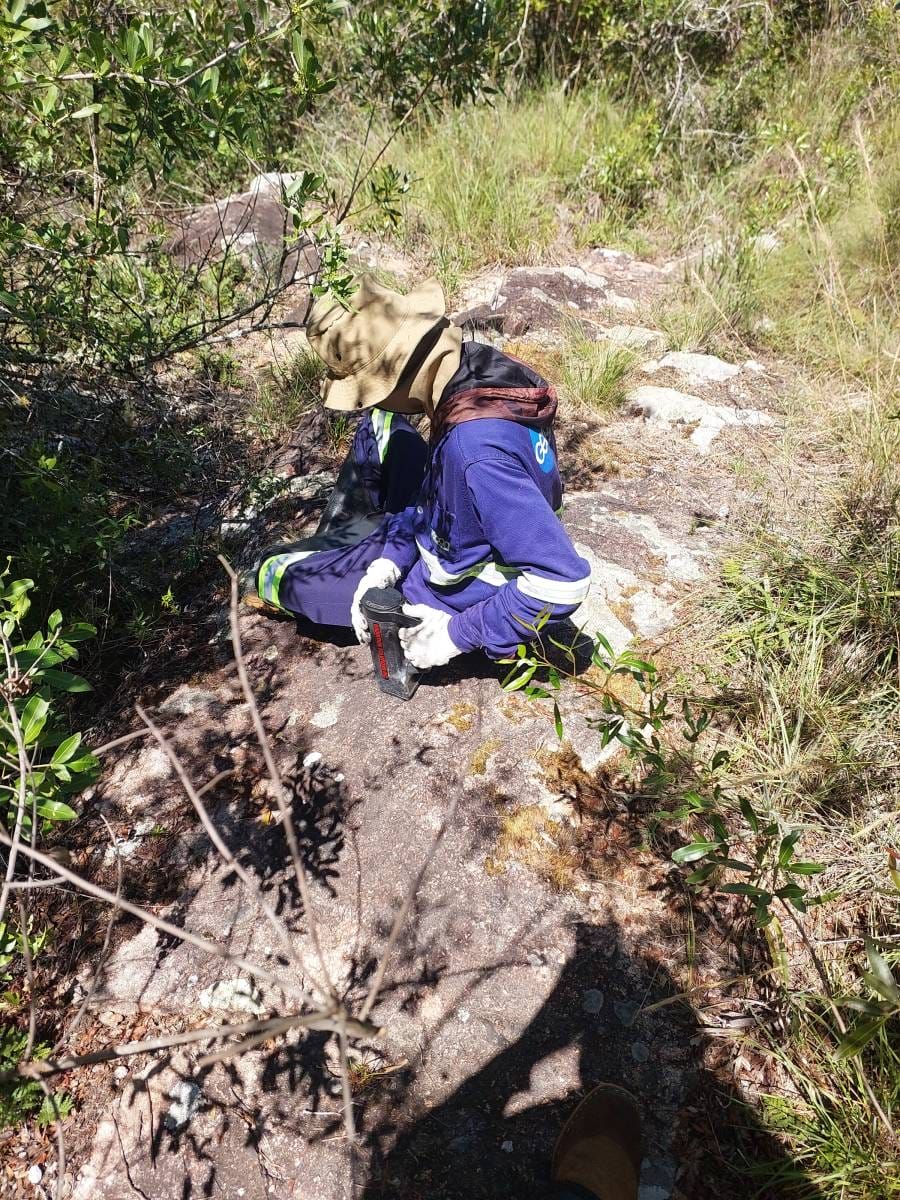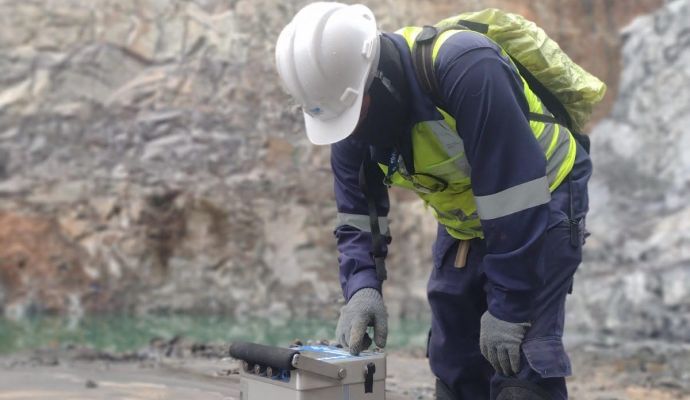Gamma spectrometry is a geophysical investigation that will measure the sources of radiation of a given material, with the main sources of natural gamma radiation detected on the Earth’s surface coming from the natural disintegration of potassium (40K) and the elements of the uranium (238U) and thorium (232Th) series in soil and rocks.
The total radiation count will be obtained through a spectrometer, by measuring all gamma rays within the energy window from 0.41 to 2.81 MeV. In this interval, each of these three elements concentrates at different energy peaks and the measuring equipment records the energies and intensities at regular intervals in rock/soil samples. Based on the spectral patterns and peak intensities, it is possible to infer the concentration and distribution of these elements in the subsurface.
